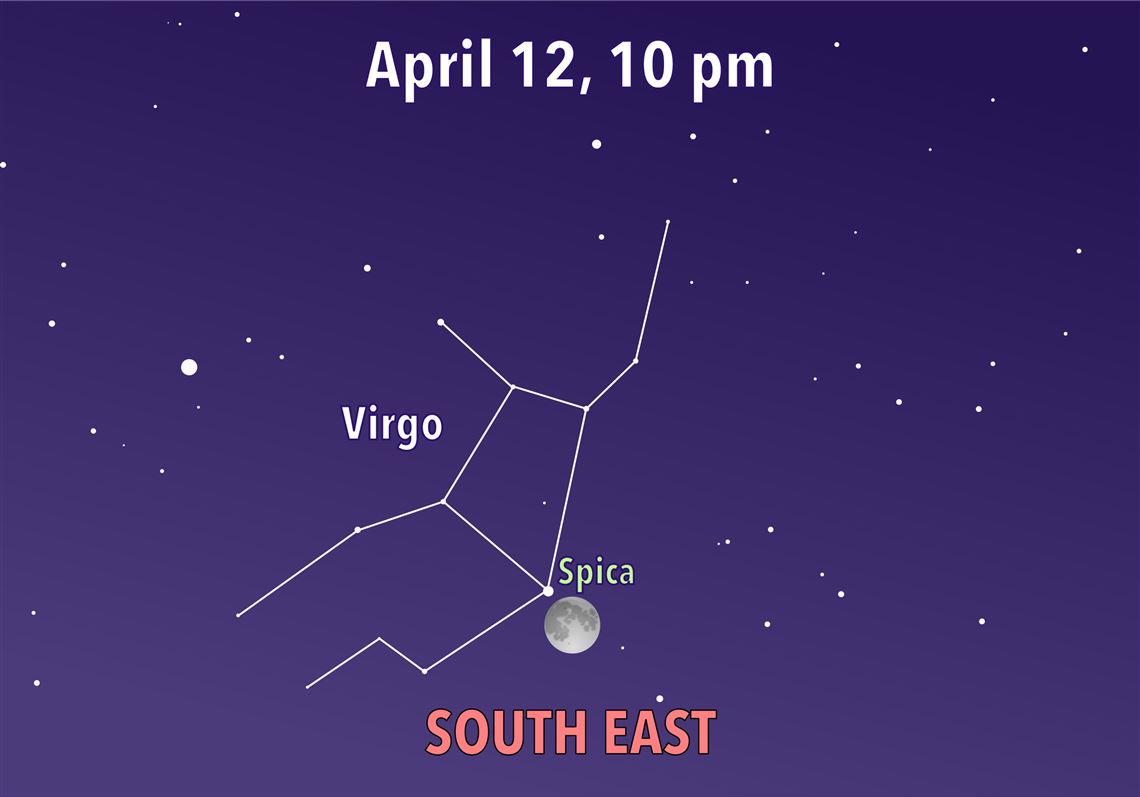April’s full moon is commonly nicknamed “the pink moon” in tribute to spring as early blooming pink wildflowers native to eastern North America coat the ground like blushing moss.
Also noting spring and warmer weather is the Algonquin tribe’s name for April’s full moon, “Breaking Ice Moon.” The Dakota tribe’s name for it is, “Moon When the Streams Are Again Navigable.”
In a year when the Allegheny River more than once glazed with ice, these descriptive names mirror modern experiences.
On Saturday, the night of the full moon, the silvery gleaming orb will appear to be remarkably close to the blue-white star, Spica. Sparkling Spica is the brightest star in the constellation Virgo, and its appearance signals the start of the growing season.
Long before electricity and contemporary timekeeping, people looked to the heavens to mark seasonal reminders.
Spica (name translating to wheat or grain) is actually a double star that appears as one from 250 light years away on Earth. Spica A and Spica B are very close together, only about eleven million miles apart, and their orbital period is just four days. Their extreme proximity and rapid orbits distort each star into elongated shapes, like eggs, with the narrowest ends pointing towards each other.
The luminosity of the whirling binary system makes Spica the fifteenth brightest star and a stunning companion to the full moon.
First Published: April 8, 2025, 9:30 a.m.















